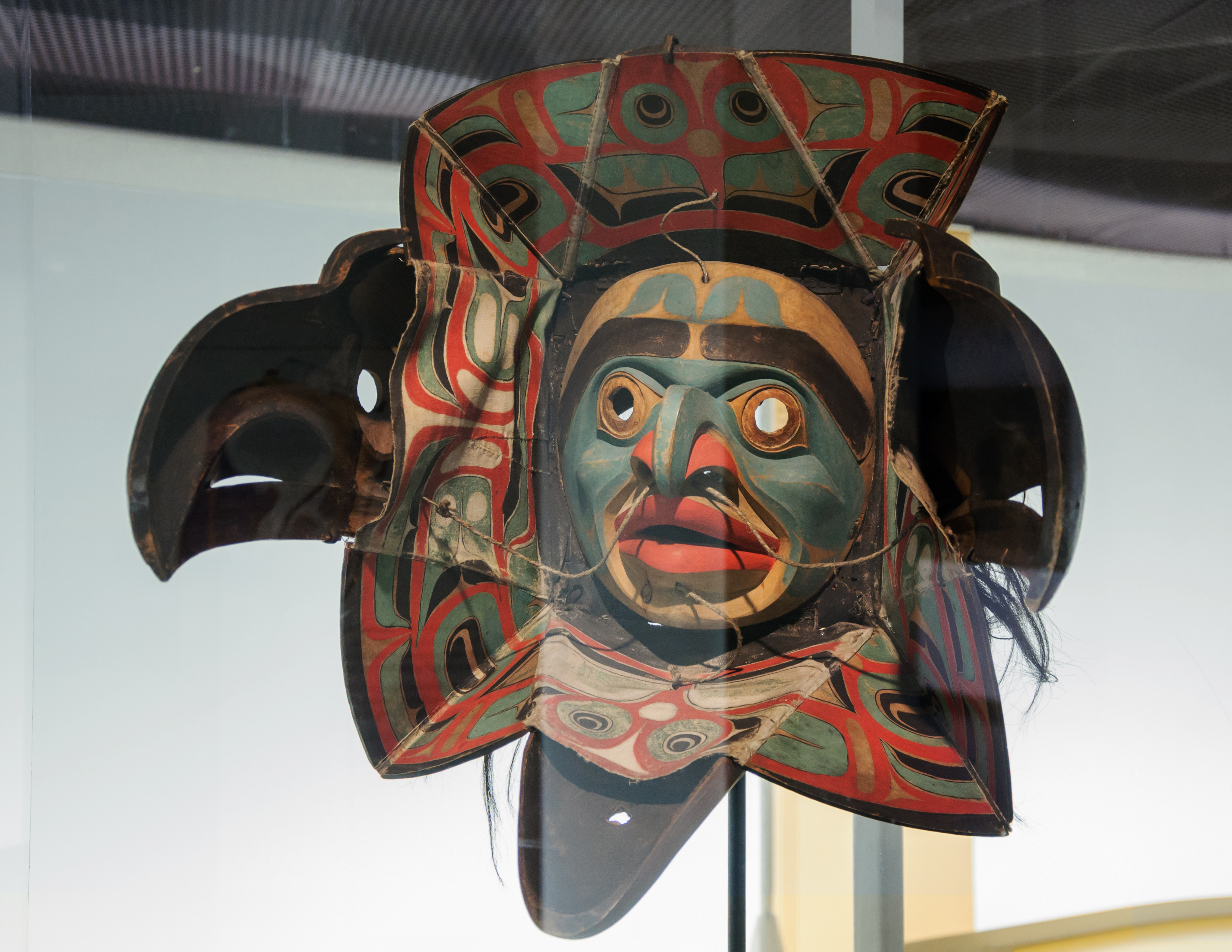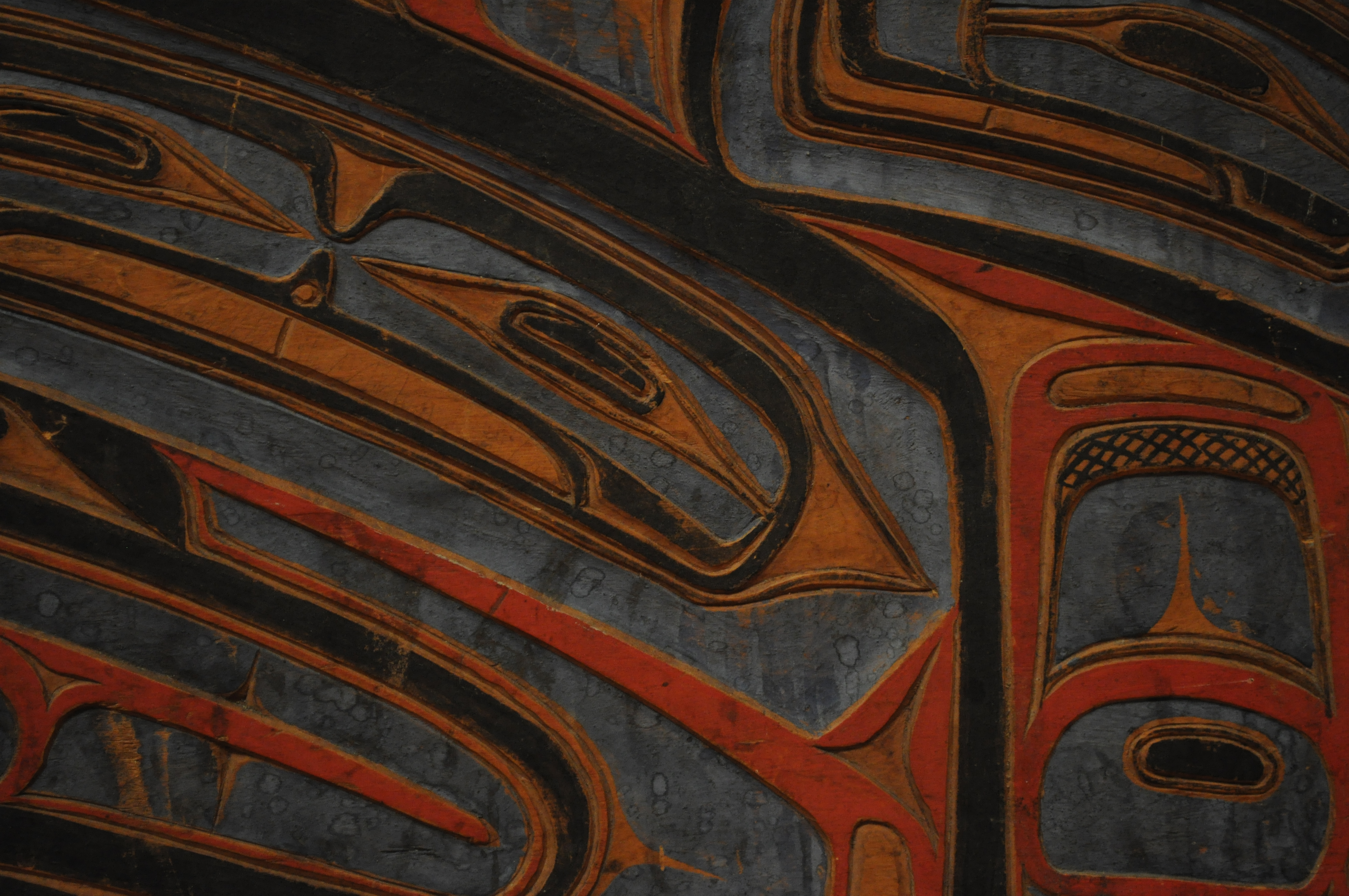|
Bella Coola People
The Nuxalk people (Nuxalk: ''Nuxalkmc''; pronounced )'','' also referred to as the Bella Coola, Bellacoola or Bilchula, are an Indigenous First Nation of the Pacific Northwest Coast, centred in the area in and around Bella Coola, British Columbia within their wider traditional territory: Kulhulmcilh. Their language is also called Nuxalk. Their on-reserve tribal government is the Nuxalk Nation. Name and tribes/groups The name "Bella Coola", often used in academic writing, is not preferred by the Nuxalk; it is a derivation of the neighbouring Wakashan-speaking coastal Heiltsuk people's name for the Nuxalk as ''bəlxwəlá'' or ''bḷ́xʷlá'', meaning "stranger" (rendered plxwla in Nuxalk orthography). Within the Nuxalk language, "Nuxalkmc" is the term for the people, and "ItNuxalkmc" is the term for the language, and these terms are increasingly being used in English locally. The Nuxalk peoples, known today collectively as Nuxalkmc, are made up of lineages representing sever ... [...More Info...] [...Related Items...] OR: [Wikipedia] [Google] [Baidu] |
Eulichan Stink Box
The eulachon ( (''Thaleichthys pacificus''), also spelled oolichan , ooligan , hooligan ), or the candlefish, is a small anadromous species of smelt that spawns in some of the major river systems along the Pacific coast of North America from northern California to Alaska. Etymology The name "candlefish" derives from it being so fatty during spawning, with up to 15% of the total body weight in fat, that if caught, dried, and strung on a wick, it can be burned as a candle. This is the name most often used by early explorers. The name ''eulachon'' (occasionally seen as oolichan, ooligan, oulachon, and uthlecan) is from the Chinookan language and the Chinook Jargon based on that language. One of several theories for the origin of the name of the state of Oregon is that it was a corruption from the term "Oolichan Trail", the native trade route for oolichan oil. In some parts it is also known as "halimotkw", which can be translated as "savior fish" or "salvation fish", due to its av ... [...More Info...] [...Related Items...] OR: [Wikipedia] [Google] [Baidu] |
Tallheo, British Columbia
Tallheo is the location of a former village of the Nuxalk known as Talyu, and is a former cannery town near Bella Coola, British Columbia, Canada, on North Bentinck Arm. Tallheo is also the name of the dialect of the Nuxalk language spoken by the Talhyumc, the particular subgroup of the Nuxalk who live there. In 1905 the Tallheo Cannery was started by a Norwegian immigrant, a member of the block settlement at what became Hagensborg in the Bella Coola Valley nearby, employing members of the Talhiyumc and local Norwegian-Canadian community and many others. The cannery specialized in sockeye, coho, pink, chum, and spring salmon and was owned by the Canadian Fishing Company, whose headquarters were in Vancouver. Once a thriving community, Tallheo Cannery now operates as a bed and breakfast. Tallheo should not be confused with Tallheo Hot Springs, which is located on the west bank of South Bentinck Arm. See also *List of canneries in British Columbia This is a list of canner ... [...More Info...] [...Related Items...] OR: [Wikipedia] [Google] [Baidu] |
Fort McLoughlin
Fort McLoughlin was a fur trading post established in 1833 by the Hudson's Bay Company (HBC) on Campbell Island in present-day British Columbia, Canada. At the time the Hudson's Bay Company performed quasi-governmental duties on behalf of the British Empire as well as undertaking trade for profit. The site is believed to have been at McLoughlin Bay on the northeast side of Campbell Island and is associated with the relocation of the Heiltsuk community of Bella Bella from its former location on islets near Denny Island. The McLoughlin name, which is that of John McLoughlin, regional head of company operations at that time, is also found in a lake and a creek entering that bay, and was conferred on these locations after the fort had closed. Background One of the primary reasons for the establishment of Fort McLoughlin, as well as Fort Simpson to the north, was to undermine the American dominance of the Maritime Fur Trade. By 1830 the higher prices paid for furs by American c ... [...More Info...] [...Related Items...] OR: [Wikipedia] [Google] [Baidu] |
Nuxalk Transformation Mask 1
The Nuxalk people (Nuxalk: ''Nuxalkmc''; pronounced )'','' also referred to as the Bella Coola, Bellacoola or Bilchula, are an Indigenous First Nation of the Pacific Northwest Coast, centred in the area in and around Bella Coola, British Columbia within their wider traditional territory: Kulhulmcilh. Their language is also called Nuxalk. Their on-reserve tribal government is the Nuxalk Nation. Name and tribes/groups The name "Bella Coola", often used in academic writing, is not preferred by the Nuxalk; it is a derivation of the neighbouring Wakashan-speaking coastal Heiltsuk people's name for the Nuxalk as ''bəlxwəlá'' or ''bḷ́xʷlá'', meaning "stranger" (rendered plxwla in Nuxalk orthography). Within the Nuxalk language, "Nuxalkmc" is the term for the people, and "ItNuxalkmc" is the term for the language, and these terms are increasingly being used in English locally. The Nuxalk peoples, known today collectively as Nuxalkmc, are made up of lineages representing sever ... [...More Info...] [...Related Items...] OR: [Wikipedia] [Google] [Baidu] |
1862 Pacific Northwest Smallpox Epidemic
The 1862 Pacific Northwest smallpox epidemic was a smallpox outbreak that started in Victoria on Vancouver Island and spread among the indigenous peoples of the Pacific Northwest Coast and into the indigenous peoples of the Northwest Plateau, killing a large portion of natives from the Puget Sound region to Southeast Alaska. Two-thirds of British Columbia natives died—around 20,000 people. The death rate was highest in southeast Alaska and Haida Gwaii—over 70% among the Haida and 60% among the Tlingit. Almost all native nations along the coast, and many in the interior, were devastated, with a death rate of over 50% for the entire coast from Puget Sound to Sitka, Alaska, part of Russian America at the time. In some areas the native population fell by as much as 90%. The disease was controlled among colonists in 1862 but it continued to spread among natives through 1863. While colonial authorities used quarantine, smallpox vaccine, and inoculation to keep the disease from spr ... [...More Info...] [...Related Items...] OR: [Wikipedia] [Google] [Baidu] |
Heiltsuk People
The Heiltsuk , sometimes historically referred to as ''Bella Bella'', or ''Híɫzaqv'' are an Indigenous people of the Central Coast region in British Columbia, centred on the island community of Bella Bella. The government of the Heiltsuk people is the Heiltsuk Nation, though the term is also used to describe the community. Its largest community is Bella Bella. They should not be confused with the Salish-speaking Nuxalk peoples, who were formerly usually called Bella Coola in English. History Ancestors of the Heiltsuk (Haíɫzaqv) have been in the Central Coast region of British Columbia since at least 7190 BCE or possibly even up to 12,000 BCE as evidenced by a 2017 archaeological study of their traditional home on Triquet Island. The Heiltsuk (Haíɫzaqv) are the main descendants of Haíɫzaqvḷa(Heiltsuk)-speaking people and identify as being from one or more of five tribal groups: W̓úyalitx̌v (Wuyalitxv) (Seaward Tribe or Seaward Division; outside water people), ... [...More Info...] [...Related Items...] OR: [Wikipedia] [Google] [Baidu] |
Bella Coola Valley
The Bella Coola Valley is a relatively small but distinct region located in the Central Coast region of British Columbia, Canada, comprising the valley of the Bella Coola River and its tributaries. The region is served by BC Hwy 20, which runs from Williams Lake to the town of Bella Coola at the head of North Bentinck Arm, from where there is seasonal ferry service to Vancouver Island and Prince Rupert. The entire valley, and the regions surrounding North and South Bentinck Arm and Dean and Burke Channels, are the historical territory of the Nuxalk Nation, who claim sovereignty over it as unsurrendered to the Crown. The Bella Coola River, and so by default the Bella Coola Valley, forms the boundary between the Kitimat Ranges to the north and the Pacific Ranges to the south, which are two of the three major subdivisions of the Coast Mountains, the other being the Boundary Ranges along the border with Alaska. Communities * Bella Coola proper * Bella Coola Indian Reserve No. 1 ... [...More Info...] [...Related Items...] OR: [Wikipedia] [Google] [Baidu] |
Talchako River
The Talchako River is a river in the Bella Coola Valley of the Central Coast region of British Columbia, Canada Canada is a country in North America. Its Provinces and territories of Canada, ten provinces and three territories extend from the Atlantic Ocean to the Pacific Ocean and northward into the Arctic Ocean, making it the world's List of coun .... It meets the Atnarko River at the community of Stuie to form the Bella Coola River. See also * List of rivers of British Columbia References Bella Coola Valley Pacific Ranges Rivers of the Pacific Ranges Range 3 Coast Land District {{BritishColumbiaCoast-river-stub ... [...More Info...] [...Related Items...] OR: [Wikipedia] [Google] [Baidu] |
Atnarko
Atnarko is a locality on the Atnarko River, at the south end of Tweedsmuir Provincial Park in the Bella Coola Valley region of British Columbia, Canada. The original name of the post office located here was Anaham, a name associated with the Tsilhqot'in people of the neighbouring Chilcotin Country region. Opened under that name in 1907, it was changed to Atnarko in 1913, with the post office itself closing in 1932. Location It is located southeast of the community of Stuie, which is at the base of the "Big Hill" where BC Hwy 20 descends from the Chilcotin Plateau into the Bella Coola Valley. The Hotnarko River The Hotnarko River is a river in the Bella Coola Valley subregion of the Central Coast region of British Columbia, Canada. It is a tributary of the Atnarko River flowing southwest to meet that river a few miles upstream from the locality of Atnar ... joins the Atnarko River a few miles further upstream to the southeast. References Unincorporated settlements in ... [...More Info...] [...Related Items...] OR: [Wikipedia] [Google] [Baidu] |
Stuie
Stuie is a community in the Bella Coola Valley of the Central Coast region of British Columbia, Canada, located at the confluence of the Atnarko and Talchako Rivers, which is the "start" of the Bella Coola River. Stuie is the site of a historic Nuxalk The Nuxalk people (Nuxalk language, Nuxalk: ''Nuxalkmc''; pronounced )'','' also referred to as the Bella Coola, Bellacoola or Bilchula, are an Indigenous peoples of the Pacific Northwest Coast, Indigenous First Nations in Canada, First Nation ... village. Climate References Unincorporated settlements in British Columbia Pacific Ranges Bella Coola Valley Nuxalk {{BritishColumbiaCentralCoast-geo-stub ... [...More Info...] [...Related Items...] OR: [Wikipedia] [Google] [Baidu] |

